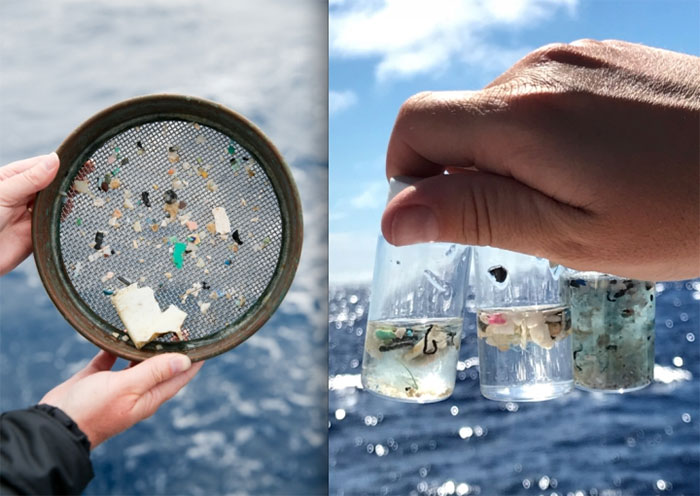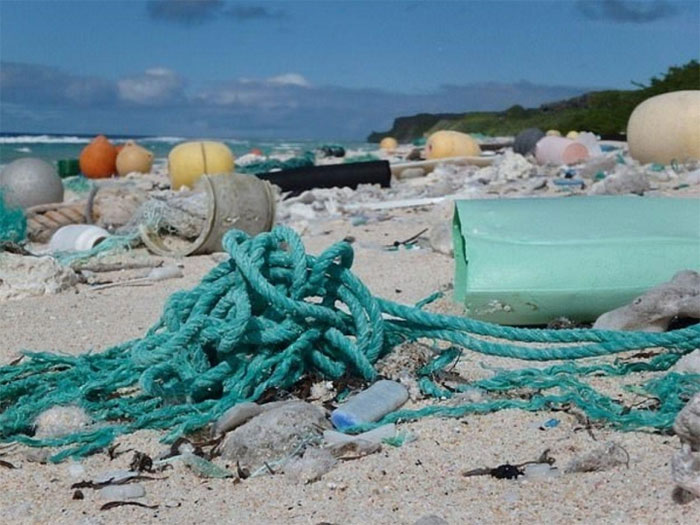The oceans are facing threats from plastic waste, with nylon ropes used on fishing boats being one of the main contributors.
Microplastics are tiny plastic particles or fibers floating in the water, which inadvertently become food for many fish and marine organisms. When these fish are caught by humans or consumed by other animals, the microplastics continue to move into new living bodies. This creates a cycle that poses a threat not only to human health but also to various animal species.
It is important to note that over time, the accumulation of microplastics in animal bodies can pose health risks, such as airway obstruction leading to suffocation and adverse effects on the digestive system. These are just a few of the many reasons why animals can die from plastic waste.
Previous studies have shown that a significant amount of floating microplastics in the ocean comes from plastic packaging and various types of plastic waste. Other sources include synthetic fibers entering wastewater from factories or rubber particles shedding from car tires, all of which flow into rivers and eventually into the sea.

Microplastics in the ocean come from human littering of plastic waste.
In a recent study by the University of Plymouth (UK), the use of ropes made from synthetic fibers (mostly nylon) in the seafood industry could be generating billions of microplastic particles in the ocean each year. The Plymouth study also conducted experiments on various types of ropes to obtain the most objective assessment.
Based on field experiments and laboratory simulations, scientists found that new and used nylon ropes within a year can release approximately 20 microplastic fragments into the ocean for every meter they are pulled.
The longer the rope is used, the more microplastics are released, with an average of about 720 microplastic particles falling into the ocean per meter, and this number increases to 760 for ropes that are 10 years old.
With these figures, it is estimated that a new 50-meter rope can release between 700 to 2,000 microplastic fragments each time it is pulled. For older ropes, this number can rise to 40,000 fragments.
With over 4,500 fishing vessels operating in the UK, it is estimated that the oceans will endure approximately 326 million to 17 billion microplastic particles each year from seafood harvesting activities.
Dr. Imogen Napper, a researcher at the University of Plymouth, stated: “These estimates were calculated after the ropes had to pull a weight of 2.5 kg. However, most fishing activities will have to transport much heavier loads, creating more friction and likely resulting in more microplastic particles. This underscores the urgent need for standards regarding the maintenance, replacement, and recycling of nylon ropes in the maritime industry. It also highlights the importance of innovating a new, more environmentally friendly rope design.”
The University of Plymouth was the first to highlight the global issue of ocean microplastics and won the Queen’s Anniversary Prize for Higher Education in 2019.
In previous research, scientists at the University of Plymouth also indicated the long-term damage to fishermen’s catch yields, raising awareness about the potential long-term harm that marine waste can cause to their catch.

Microplastics found in used ropes.
Professor Richard Thompson OBE FRS, Head of the International Marine Litter Research Unit, stated:
“For centuries, most items in the fishing industry, including ropes and nets, were made from natural resources. However, the large-scale increase in plastic production since the 1950s has led to plastics gradually replacing our natural products.
However, the durability of plastics has posed a significant environmental challenge when items reach the end of their lifespan or, as in this study, when they release microplastics. This research highlights a previously unidentified source of microplastics that is increasing significantly. This compels us to consider long-term and positive changes.”
It is evident that microplastics from nylon ropes used on fishing vessels pose a major threat to the marine environment. Therefore, every fisherman needs to enhance their awareness of marine protection while at sea, as this action will ensure long-term livelihoods.

















































